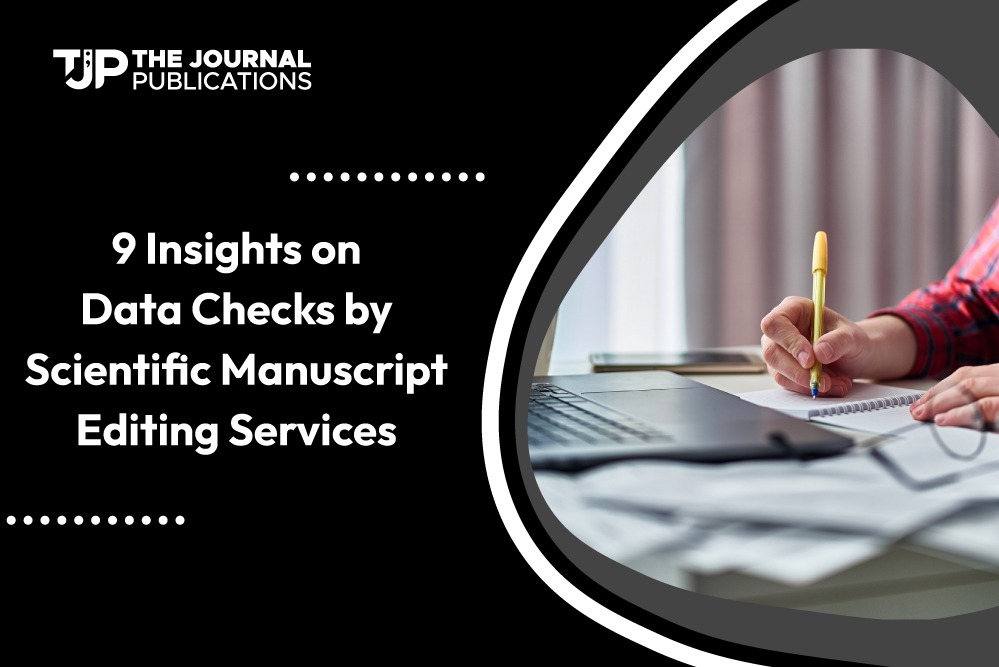Intro
Scientific integrity is the cornerstone of impactful research. With rising worries about data transparency, research editing services have stepped up. They now check that research data is not only error-free but also trustworthy. Top scientific editors are prioritizing data checks, enabling researchers to present their findings with confidence. This blog explores nine key insights. It shows how scientific manuscript editing services improve data integrity and reproducibility and ensure that research meets the highest standards.
-
Importance of Data Integrity in Scientific Research
Data integrity is the backbone of reliable research. Scientific journal publication services ensure data consistency. They check that datasets are accurately reported and align with the study’s objectives. Their editors scrutinize data collection methods and examine sources. They verify that the data supports the research claims and conclusions. This rigorous process detects and corrects errors, inconsistencies, and ambiguities. So, research manuscripts must present accurate and reliable data. This boosts the study’s and author’s credibility.
Why It Matters:
Enhances credibility in scientific journal publication services.
Reduces the risk of errors or misinterpretations.
Improves trust in scientific findings.
Editors ensure that the data, tables, and figures match the manuscript and are accurate and consistent throughout.
-
Spotlight on Reproducibility Standards
Reproducibility is the criteria for scientific excellence. Editors check whether the methods and results allow for replication of the work. Standards of reproducibility are vital. Editors examine the research design and methods. They verify that these are clearly explained and easily accessible. This ensures other researchers can replicate the study. Editors also review the data and results. They confirm that the research findings are reliable and can be independently verified.

Key Focus Areas:
Ensure that the methods provide a comprehensive description.
Verifying statistical analyses for clarity and transparency.
Identifying inconsistencies in data sets.
High-quality editing ensures that manuscripts meet top journals’ reproducibility standards.
-
Verification of Statistical Data
Numbers tell the story in many scientific studies. Scientific editing professionals specialize in verifying statistical data for accuracy and clarity. Statistical analysis is a crucial part of many scientific studies. Editing pros check statistical data for errors and ambiguities. They check whether the data presents itself in a clear and concise manner. This lets readers understand the results and replicate the study, if needed. Editors also verify that statistical methods receive proper citation and referencing. This helps maintain the integrity of the research and its findings.
What They Check:
Are p-values and confidence intervals correctly reported?
Is the statistical methodology appropriate?
Are graphs and charts aligned with the results?
Editing services for scientific papers can help researchers avoid common statistical pitfalls.
-
Ensuring Transparency in Data Presentation
Transparency is key to building trust. Editing services for scientific papers ensure that data is clear. They prevent ambiguity and selective reporting. They check for consistency in unit measurements and notation. Editors also review the data for missing values or inconsistencies. They verify that the presentation of the data follows a logical order. This helps readers follow the study’s progression and findings. By ensuring transparency, editors help researchers build credibility with their audience.
Strategies Used by Scientific Editors:
Highlighting incomplete or missing data sets.
Recommending transparent descriptions for outlier data.
Ensuring that supplementary materials are referenced and accessible.
A clear, open presentation of raw data and methods boosts a manuscript’s value in science.
-
Cross-referencing figures, tables, and text.
Manuscripts often include complex figures and tables. A mismatch between these and the main text can confuse reviewers and readers. Scientific editing services ensure seamless cross-referencing. Editors also verify that figures and tables have the correct numbering. They check that the text cites each figure and table. This prevents readers from searching for missing references. By doing so, editors guarantee that the entire manuscript is cohesive and easy to follow.
Detailed checks include:
Consistency in data reported across tables, figures, and the manuscript body.
Proper labeling of axes and legends in graphs.
Make sure that tables provide a clear summary of the findings.
These thorough checks by editor’s streamline peer review and improve readability.
-
Adherence to journal guidelines
Top journals have stringent requirements for data presentation and reproducibility. Scientific manuscript editing services align manuscripts with these guidelines. Editors also ensure that manuscripts obey journal rules on data sharing. This means they check if authors provide enough information to replicate results. They verify that they can access raw data and that they describe the methods in detail. This attention to detail saves authors from rejections and reviewers from frustration.
What is addressed:
Formatting of figures and tables.
Citation of datasets in alignment with journal standards.
Clear reporting of experimental conditions.
Using scientific editing professionals, researchers can confidently submit their work to high-impact journals.
-
Addressing Ethical Concerns in Data Handling
Ethics in research is paramount. Scientific editing services ensure ethical compliance in data reporting. Researchers can violate ethical norms in data collection and analysis without realizing it. Editors scrutinize manuscripts for signs of fabrication, falsification, or plagiarism. They check if the authors obtained the necessary consent and approvals. Editors check that authors have anonymized sensitive data to protect participants’ identities. Scientific editing services help authors meet ethical standards and avoid retractions.
Common Issues Resolved:
Avoiding duplication of data across many publications.
Flagging suspiciously altered images or figures.
Highlighting discrepancies in sample sizes or experimental data.
Editors work with authors to resolve these issues. This safeguards the research’s integrity.
-
Collaboration Between Scientists and Editors
The best results come from teamwork. Scientific editors collaborate with researchers to clarify ambiguities and resolve data inconsistencies. Clarifying ambiguities helps researchers strengthen their arguments. Editors ask questions to ensure authors provide accurate explanations. This teamwork approach helps authors avoid mistakes that could lead to retractions. By working together, scientists and editors create a credible and reliable final product. This collaboration also helps researchers improve their writing skills for future publications.
How Collaboration Works:
Authors provide raw data for verification.
Editors suggest revisions or highlight potential errors.
Regular communication ensures alignment on key findings.
Editing services for scientific papers do more than fix errors. They provide insights to improve a manuscript.
-
Benefits for the Global Research Community
Scientific manuscript editing services help individual researchers and the whole scientific community. They promote trust in science by ensuring data integrity and reproducibility. They also enhance the credibility of scientific journals. Journals that publish reliable research increase their reputation. This attracts more readers and submissions from top researchers. As a result, the quality of research in the journal improves. This cycle benefits the entire scientific community.
Impact on the Scientific Community:
Reduces retractions due to errors or fraud.
Encourages transparency across disciplines.
Enhances the reputation of researchers and journals alike.
Close
The focus on data integrity in science makes editing services essential. They ensure reproducibility in research. Scientific editors excel at ensuring data transparency and compliance with journal standards. Their hard work improves each manuscript. It also raises global publishing standards.
To optimize your research for submission, partner with a manuscript editing service. It can make all the difference. Invest in expert editing. It will ensure data integrity and secure your place in high-impact journals.
FAQs
-
What are scientific manuscript editing services?
Researchers strengthen their papers with scientific editing services, ensuring clarity, accuracy, and compliance with journal guidelines.
-
Why is data integrity important in scientific publishing?
Data integrity guarantees accurate and reliable research findings, earning credibility in the scientific community.
-
How do scientific editors check for reproducibility?
Scientific editors ensure methods, results, and data are crystal clear, enabling other researchers to replicate the study with precision.
-
Can editing services for scientific papers help with journal submissions?
These services guarantee that manuscripts meet journal requirements, significantly boosting acceptance rates.
-
How do I choose the right scientific editing service for my paper?
Select a service with experienced editors who understand your field. They will improve your writing style and fix language errors. This ensures your manuscript is polished and ready for submission.
-
Can I trust a scientific editing service with my data?
Reputable services safeguard your data with rigorous security measures, ensuring confidentiality and peace of mind. They protect your work with robust systems that guarantee complete data safety. They aim to avoid duplicate data, fix errors, and ensure ethical reporting.
-
How can expert scientific editing enhance my research?
Expert editing boosts your manuscript’s readability, accuracy, and quality. It helps you get published in high-impact journals.





